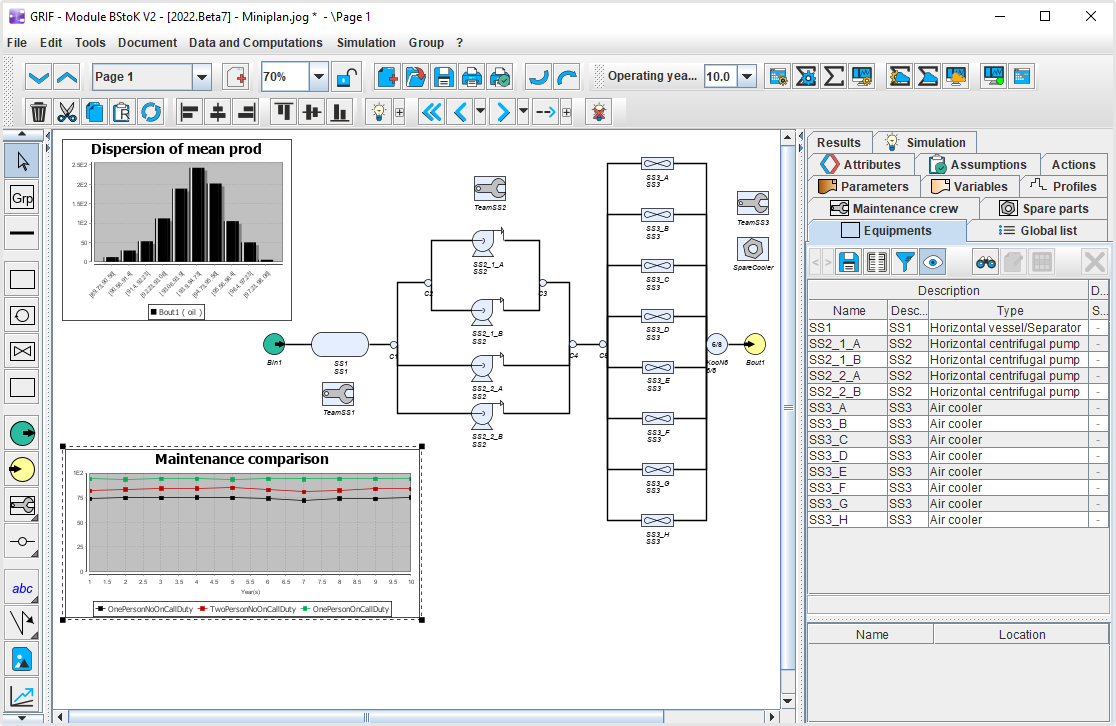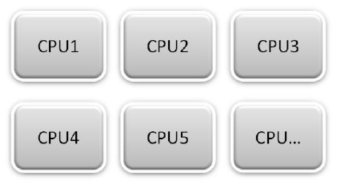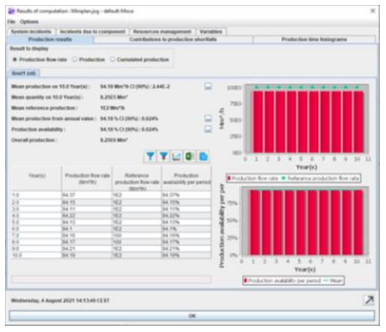Stochastic block diagrams are created via the intuitive graphical interface. All the elements (input, block, link, output) needed to build the required model can be created in just a few clicks. Each block can then be configured according to its failures, repairs, start/stop condition, maintenance schedule, etc.
When a block is created, a Petri net is generated automatically. This use of Petri nets in the background means that the BStoK module has a large library of block configurations and can model the interactions between the different system elements..
Once the block diagram is created, the following features are available on BStoK:
- Availability, reliability and performance calculations for each block and system.
- Customized calculations with additional observed variables.
- Spare part and maintenance team management.
- Incident duration analysis.
- List of main contributors to downtime.
The module uses the MOCA-RP calculation engine which quickly produces the anticipated results and provides information on the confidence level attributed to them.

Groups and sub-systems: this notion of hierarchy means that the model can be divided up according to the actual distribution of the system whatever the number of inputs/outputs. A preview is displayed on the block so that its composition is always visible.

Readability: the block diagram approach provides the user with a graphic representation of the architecture of the system being analyzed. No previous Petri Net knowledge is required to use this module.
Model construction time: a model comprises just three different element types: blocks, connectors, and links. The user selects the characteristics for each block or system element from a configuration interface. Data tables can be used to modify one characteristic on several blocks at the same time.
Interdependency between blocks: the BStoK module allows for interaction between different blocks, whether common cause failures, redundancies, or failures on shared resources (repairs, spare parts, etc.).
Compatibility with Petro: models from BStoK can be used in the Petro module to perform calculations on processing flow.
Computation speed: this module features a computation simulator (Moca-RP) which rapidly produces the required results and provides information on the level of confidence attributed to them.
Multi-core computing: as with all the modules in the simulation package, calculations can be performed on several processors simultaneously which significantly reduces calculation time. A high-performance computing plug-in is also available for use with supercomputers.

Interactive simulation: users can validate the model’s operation using step-by-step simulation, as with the Petri and Petro modules.
Summary of results. All the key results are summarized in a separate window:
- Mean production and production over a number of years,
- Incidents,
- Main contributors,
- Use of spare parts and the maintenance team.











